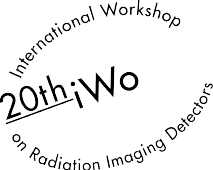Speaker
Description
Modern flat-panel x-ray imaging detectors have played an important role in the transition from analog to digital x-ray imaging. They capture an x-ray image electronically and hence enable a clinical transition to digital radiography. Research over the past two decades has indicated that the most practical flat-panel medical digital radiographic systems are based on a large-area integrated circuit or array of many single pixels. For both the indirect and direct conversion approaches, the latent image is a charge distribution residing on the array’s pixels. In other hands, current pixel detector technologies for X-rays at synchrotron radiation sources and Free electron laser are building a hybrid technology consisting of a passive sensor bump-bonded to an active read-out chip. Due to the high atomic number, low-energy band gap and high electron mobility, the opportunity to use of a metamorphic InGaAs/InAlAs quantum well-based devices was proposed for the fast pixelated photon detectors. In this work, we are presenting a double side-segmented QW device under discussion of spatial resolution and a cross-talk between pixels. The devices were tested with 10 keV, 11 keV, 14 keV and 20 keV photon energies with a beam size of 90×90µ2. The position of the synchrotron radiation was estimated with 1.3 µm precision. The charge spread in the material and related crosstalk function between pixels were extracted from the position estimation measurements of the photon beams. The results show that the cross-talk between pixels is actually responsible for the different resolutions obtained, independently of the experimental conditions, pointing out the importance of the geometry of the fabricated devices. The cross talk between the pixels is minimized when the QW is segmented.




